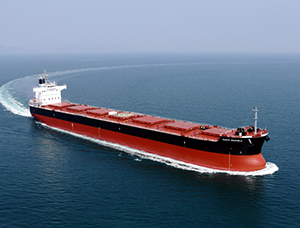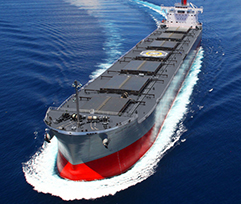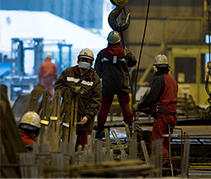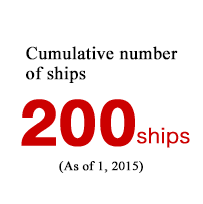KAMSARMAX, developed by TSUNEISHI SHIPBUILDING,
has grown into an industry standard with its unrivalled momentum.
Tracks are followed.

KAMSARMAX, developed by TSUNEISHI SHIPBUILDING,
has grown into an industry standard with its unrivalled momentum.
Tracks are followed.




It was at the beginning of 2000s when a substantial increase in the amount of international marine trade was expected due to economic growth in countries such as China. TSUNEISHI SHIPBUILDING commenced the development of an 80,000-ton-class bulker, recognizing there were needs for upsizing Panamax bulkers in the shipping market. We named this ship “KAMSARMAX”, having the maximum size permitted to enter Port Kamsar.



The lead ship was completed at the Tsuneishi Factory in February.
This ship, launched majestically into the Seto Inland Sea on a clear winter’s day, became a best seller, with over 200 ships sold over a decade, and its name, “KAMSARMZAX”, has remained an industry standard. This is a significant result, achieved by the enthusiasm of our staff who tried to challenge conventional thinking, using a market-in idea.







Compatible with the “Common Structural Rules (CSR)” adopted in 2005, double-layered structure of fuel oil tank required by “Protection of Fuel Oil Tank” adopted in 2006.
If you try to increase structural strength, the hull needs to be heavier, so our designers considered a variety of ideas. The compliance with rules resulted in a heavier weight but better fuel efficiency was realized while securing a deadweight capacity of 82 thousand tons.



From now on, a ship must not only maintain high quality but also take the environment into consideration.
Tsuneishi by itself schedules the achievement of CO2 emission reduction targets for built ships on its roadmap for continual improvement. “KAMSARMAX”, whose fuel efficiency is improved each time it is updated, will continue to create further value.









